As I sit down to write this post, I can hardly believe that it’s been 5 years since I quit my job to pursue selling online full-time. In some ways, it seems like time has absolutely flown by, and in others, it feels like a lot more than 5 years have eclipsed.
Over the past 5 years, my goals, business, and life have evolved in some ways that I could have predicted, and many that I could not have. If you told me 5 years ago that my business would have a 4-year streak of doing over $1 million in sales, I would have said you were crazy. But that’s exactly what has happened.
It’s been a ton of fun, a lot of hard work, and I’ve learned so much along the way. In this post, I’m going to share some of the highlights, some of the low points, and other things that feel relevant to the story.
If you’ve haven’t started a business yet, perhaps this will show you what the first 5 years might look like. If you have, I’m guessing you’ll be able to relate to come of my experiences.
Free Guide: How to Build a 7-Figure e-Commerce Business from Scratch
Looking for ideas on how to scale your business and escape the 9-5? Check out this free guide on building a successful online retail business from the ground up.
The Beginning
September 20, 2013 was my last day working at my old job as an accountant. My time as an accountant is becoming more of a distant memory.
What I do vividly remember is walking out of the office on my last day.
I remember the people I talked to, the walk out of the elevator, and making my way to my car. It’s all very clear and I can remember how free and excited I felt leaving that day.
I had a good job, but it wasn’t the right job for me. I can remember doing my work and often daydreaming about having my own business. I especially didn’t like having someone else be in control of my time and in control of my tasks. In this position, I felt like I was merely existing. I wasn’t waking up anywhere close to excited about what I was going to do that day. With each passing day, I felt like I was letting some amount of my potential slip away.
It eventually became too much and I decided to put in my 2 weeks notice.
Before Making the Leap
Before putting in my 2 weeks notice, there was a lot of planning that went on. I didn’t just wake up one day and say, “Screw it, I quit.”
Well, I actually almost did that.
There was a day back in January of 2013 where I emailed the managing partner and essentially asked for a raise, or that I would be leaving the company.
I said it slightly more delicately, but that was the point.
I was called into his office and was told that while they would prefer to have me stay, compensation wasn’t about to change. They said take it or leave it and gave me a few hours to decide.
I went and sat in a small conference room, and mulled it over. I went back and forth many times in the time that I was in that room. I could almost taste the freedom, and all I had to do was go back into that office and say I was done.
But after all the considerations, I decided I better stay put. For then at least. Logically, I knew that I could put myself in a much better financial position, sell online on a bit more of a test basis, and leave on better terms with the company.
This turned out to be an excellent decision.
I did end up pulling the trigger and quitting about 9 months after the aforementioned meeting, but I was in a MUCH better place to do it.
Here are the things I set out to accomplish after that initial meeting:
- Put myself in a better financial position
- Buy a duplex
- Give selling online in my spare time a real shot
- Leave on good terms with the company
First, I decided that by working another 9 months with the company I would be able to save most of my salary during that time. I would be able to use that to save up more money, pay down some student loans, and most importantly be able to qualify for a loan to buy a duplex.
Purchasing a duplex was something that I really wanted to have in place prior to quitting my job. The goal was to buy it, live in half, and rent out the other half. I started looking in the fall of 2012, and put in offers on several properties. I had one deal that fell apart a week or two before closing due to it being tied up in some bizarre lawsuit with the State of Minnesota.
This deal was scheduled to close in October 2012, so if that would have went through perhaps that January meeting I talked about earlier would have gone differently.
Buying a duplex was a key part of my plan. I figured that it would provide some additional financial stability. It would also significantly decrease my cost of living while working to build my own business.
I was able to purchase a duplex in March of 2013. I moved in that summer and with the rent I was bringing in, I was cash flowing $305 per month. Essentially, I was getting paid to live in my own property. I won’t belabor this point any further in this post, but if you want to learn more about buying the duplex specifically, you can read the case study I did about the property here.
The next item I really wanted to accomplish was to really test out selling online more.
In college I had built up quite a bit of experience selling textbooks online. I started with mine, and that evolved into doing mini textbook buyback events at 5 colleges around Minnesota. This was still something I was operating at the time I was working as an accountant. Although it really wasn’t bringing in enough to live off of yet, it provided about $5,000 to $10,000 per year in income.
The goal was to be able to bring in money via other means selling online. The main method that I used was retail arbitrage, which is buying primarily clearance items at local stores and selling them online. At the time, retail arbitrage was a relatively new concept to me. I dove into retail arbitrage head first, and also mixed in selling some items from thrift stores. While I was working my full-time job, I was able to dedicate about 10 hours per week to this. As the months went on, I was able to get to the point of making about $1,000 per month. My thought was that if I put in full-time hours, that $1,000 per month, would turn into at least $4,000 per month. That amount would nearly replace my income from my accounting job. Getting to $1,000 per month working about 10 hours per week gave me a lot more confidence that I was on the right track, and was making the right move.
The final thing that I wanted to get in place prior to quitting my job was to leave on much better terms with my employer. As I mentioned above, I needed to do some damage control after essentially threatening to quit at the beginning of the “busy season.” Busy season is the time between about January 3rd and April 15th for accountants. During this time of the year employees were expected to work a minimum of 55 hours per week. Not to mention Saturdays were required. Needless to say, this would be a very bad time of the year for my employer if I were to leave during that time.
From January of 2013 and on, I decided to really put forth my best effort and do what it took to be a very valuable member of my team.
Until this point, it’s not like I wasn’t doing my job. I was, but I was doing enough to do a good job, and be in the middle of the pack. I wasn’t going above and beyond, and if I was honest I knew I wasn’t doing my best work.
There were a few initial ups and downs, but overall during the last 9 months I was working full time I did a very good job for my employer. By the end, I believe I accomplished that goal. Here’s a picture of an email that was sent to HR from the manager on the last project I was working on:
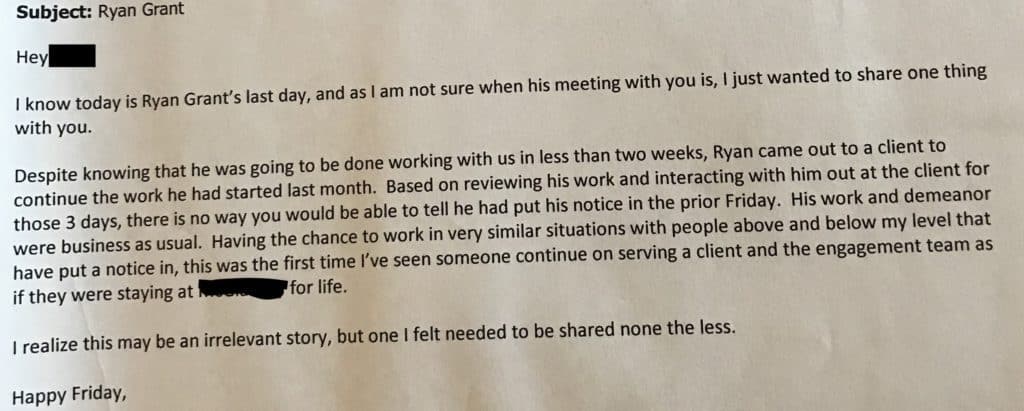
I remember the conversation of putting in my 2 weeks notice very vividly. My employer was a bit surprised and asked if there was anything they could do to make me reconsider. I told them no, and said it really wasn’t about the money. I wanted to run my own business, and not much would have got in the way of that.
They said ok, and ultimately said that if I was ever back in the job market to let them know and I’d be welcome to come back.
This was exactly what I was looking for.
I had every intention of making my business work, and doing whatever it took to make that happen. But in the event that it didn’t work out for whatever reason, I wanted a job I could go back to. Or at a minimum, I wanted a solid reference for whatever position I would pursue next.
So I had completed the things I wanted to do prior to quitting, and was ready to put in my 2 weeks notice.
The reason I’m sharing this with you is to show that the additional planning went a long way toward making it a success.
If you are planning on quitting your job, I highly recommend mapping out as many details as possible to make the transition a success.
This Wasn’t my First Rodeo – There were some other business activities I’d tried previously
Something that’s important to note in my story is that this wasn’t my first foray into testing out entrepreneurship. Some people see the results of where things are today and assume that I was able to see entrepreneurial success on my first go-around.
But that isn’t quite accurate.
In the past, I’ve had many experiences that relate to making money from side hustles.
Several of these pursuits involved growing up on a hobby farm. This included growing strawberries and pumpkins to sell. From planting the seeds to weeding to harvest to selling, I was involved with the whole process. This did make a bit of money, but I was probably made about $1 an hour for the time I invested.
Here’s a picture of working in the pumpkin patch when I was younger:
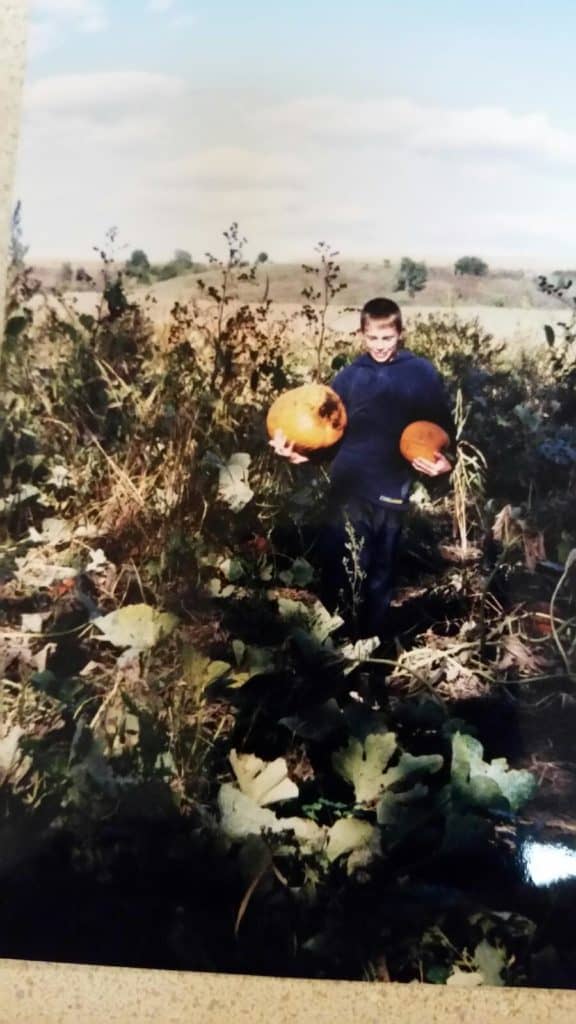
Another thing I tried was selling concrete statues. My parents had bought all of the molds and supplies needed for this when they were trying to start it as a side business. It never took off for them, and after the stuff was sitting around for a couple of years, I decided I would try to get that business off the ground one summer during college.
This meant mixing the concrete, pouring it in the molds, letting it harden, removing it from the molds, and then trying to sell the finished product.
This was very hard work and in the time I was working on this I was only able to sell a few hundred dollars worth of statues. This barely covered the costs of raw materials to make the products.
I still remember showing up at lawn and garden stores and trying to get the products in the stores. I think I only heard yes from one person that I talked to, and there were many no’s.
This was another project that had a really low amount of income earned per hour worked.
I also had tried to start a website related to online poker. While in college I was playing online poker a lot, and it was a game that I really enjoyed. The strategy – making decisions with incomplete information and based on odds – fascinated me. I was playing a lot, and at one point I had a goal of making a career out of it. There was one summer during college that I dedicated to trying to make my income mainly from playing poker. At the end of the summer I had made a profit, but not a big enough one to be worth the time. I would have made about the same amount working a minimum wage job the whole time, but the experience was valuable. I scaled back the amount I was playing significantly, but I still wanted to be involved in some way. I decided to start a website in the poker niche.
It was a site that would allow players to get rewarded based on how much they were playing. Essentially if they signed up through me then they would get some additional perks for how much they played. The online casino / poker site would essentially give back some of the money they made off of the player. It seemed like a good idea in theory, and I had signed up through a similar site when I started playing online.
I was able to get my website all set up, had things looking good, and was ready to go. What I didn’t have was a marketing plan. I had no real way to get it in front of people. I tried several different things over the next couple of months and never got any traction. This project literally made no money. But it taught me some of the things I needed to be sure to factor in when evaluating business opportunities in the future.
It may seem that none of these panned out. But without these experiences, it’s hard to say if my business would be where it is today. There were a lot of things that I learned through these projects that I was able to apply for the future. Some of these lessons included the value of hard work, resilience, being able to hear no, and not getting discouraged.
If I was to take on any of these projects today, I like to think that I could see much better results using the experience I now have. As I mentioned, I believe these experiences contributed to my current success with selling online.
2013 – Just getting started:
From September through December I was working on figuring things out in my business. I was doing a lot of trial and error to find the best places to source inventory.
At this stage in my business, I was primarily going to thrift stores and retail stores. Most of the thrift store items I would sell on eBay, and the clearance items I would sell on Amazon.
There were some days in this stretch that left me wondering why I had quit my job to do this work. However, overall I really enjoyed it. I was gaining enough momentum, and was starting to see results.
My timing with quitting my job was fortunate as well. Q4 is arguably the best time of the year to be an online seller. Q4 is short for the 4th quarter, or October through December. With Christmas falling in December, it leads to a time of very high demand.
Being able to start in a time of peak demand was very helpful in gaining momentum.
I made about $2,000 in profit in my first month selling online full-time. This was exciting to see, but I still had work to do to replace my income.
November and December of this year were much better. I was starting to find some more consistent sources of inventory, and things were starting to heat up.
One sourcing trip in particular that I remember was a late night run to Walmart. I went with my roommate at the time to look for some inventory to sell online. It was late at night in Minnesota in December, so it was quite chilly.
At the store, I quickly found the holiday section and there were great deals everywhere. We loaded up several carts full of seasonal candy, gift sets, and toys, among other items. We spent several hours in the store, and brought it all back to my house.
I bought larger quantities of some of the items than I was comfortable with. It was the largest single transaction that I’d done at the time, totaling $2,000.
Due to the amount of my available capital that this tied up, and how quickly Christmas was approaching, it was essential to get these items shipped to Amazon FBA warehouses as soon as possible.
We then listed it all for sale, removed all of the clearance stickers, labeled the inventory, and boxed it up to be ready to ship to Amazon FBA warehouses the next day. I was up well past 2 am getting all of this done.
Fortunately these items sold very well, and I had my investment back plus some significant profits within a few weeks.
I ended up doing over $27,000 in sales, and made about $8,000 in profit in the month of December 2013. This was a great month for building my confidence, as well as building the available capital in my business. Here’s a screenshot from December 2013 of my Amazon sales:
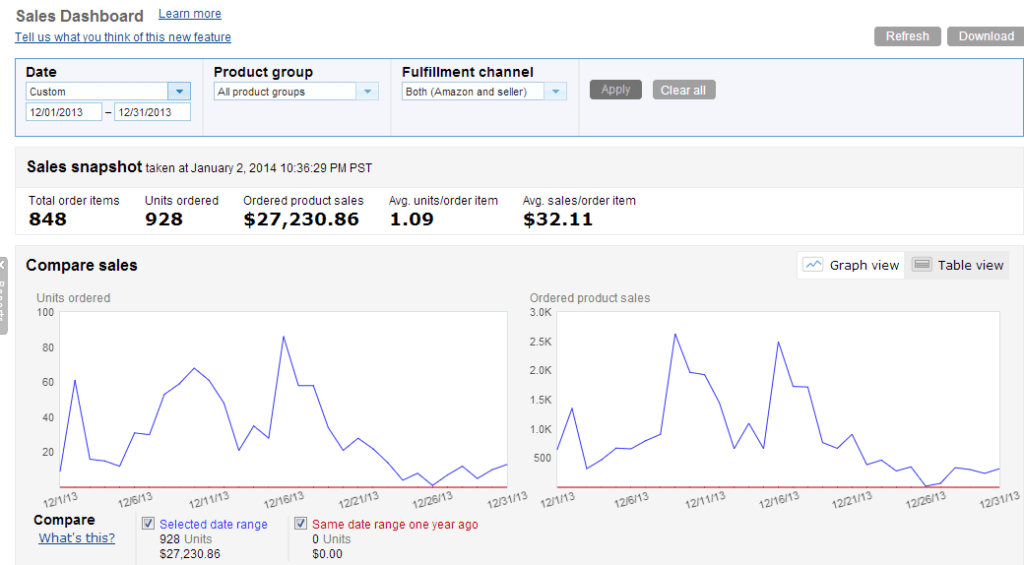
It definitely exceeded my expectations for where I thought I would be just 3 months after I quit my job.
In 2013 I did about $55K in sales and was a team of 1.
2014 – Things start heating up:
I started off 2014 much the same way that I left off 2013. The main differences were that I was starting to figure out some things that worked, I had more confidence than ever that I’d be able to replace my prior income, and I had a bit more capital to work with.
For the first 6 months of 2014, things continued in much the same way that they began. I was able to go to retail stores, discount stores, and thrift stores to find items to sell online for a profit.
During 2014, I made the decision to focus primarily on selling brand new products via Amazon FBA. The biggest reasons for this decision included:
- I didn’t have to ship items to the end consumers who purchased the products.
- I was able to just ship to FBA warehouses in bulk.
- Brand new items were selling for a higher price point, leading to a higher profit per unit.
About 6 months into the year, I realized that I was looking for the same criteria in all of the products that I was purchasing. I wanted to see proof of demand, and that I could make my desired return on investment. I reasoned that if I could find items that fit these criteria, others could as well.
I decided that I would test this out and have some friends and family help source items for me. I would provide the capital, and tell them exactly what the criteria I was looking for. In return they would be paid a percentage of the profits on all items that they purchased.
This system worked very nicely and began to show me the power of outsourcing. I was able to leverage the time of others to increase the profit potential of my business, while at the same time providing income potential to people that I cared about.
At the same time, inventory was starting to take over my house.
I literally had product in just about every room of my house. It was starting to take over my life, and I was having a very hard time unplugging from work. Here’s a few pictures of what it looked like:
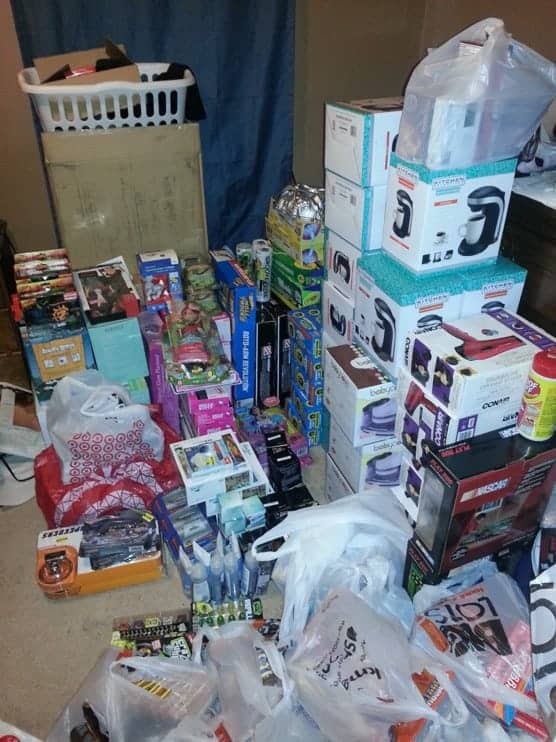
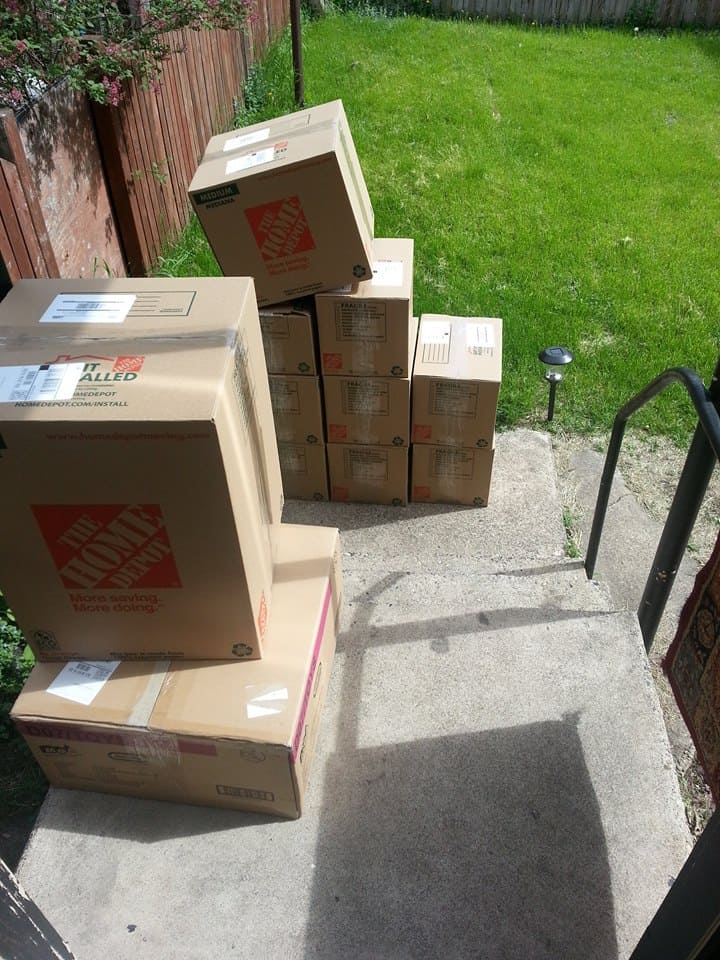
Based on my initial experiences with outsourcing, I knew that I wanted to begin building a team. I also knew that I didn’t want my team working from my house. I was confident that by growing the team would grow the overall business.
The business was at the point where it was making consistent profits each month. It wasn’t any crazy amounts at this point, but things were trending in the right direction.
Based on this, I decided to rent out my first warehouse. Here’s a look of starting to move things in:
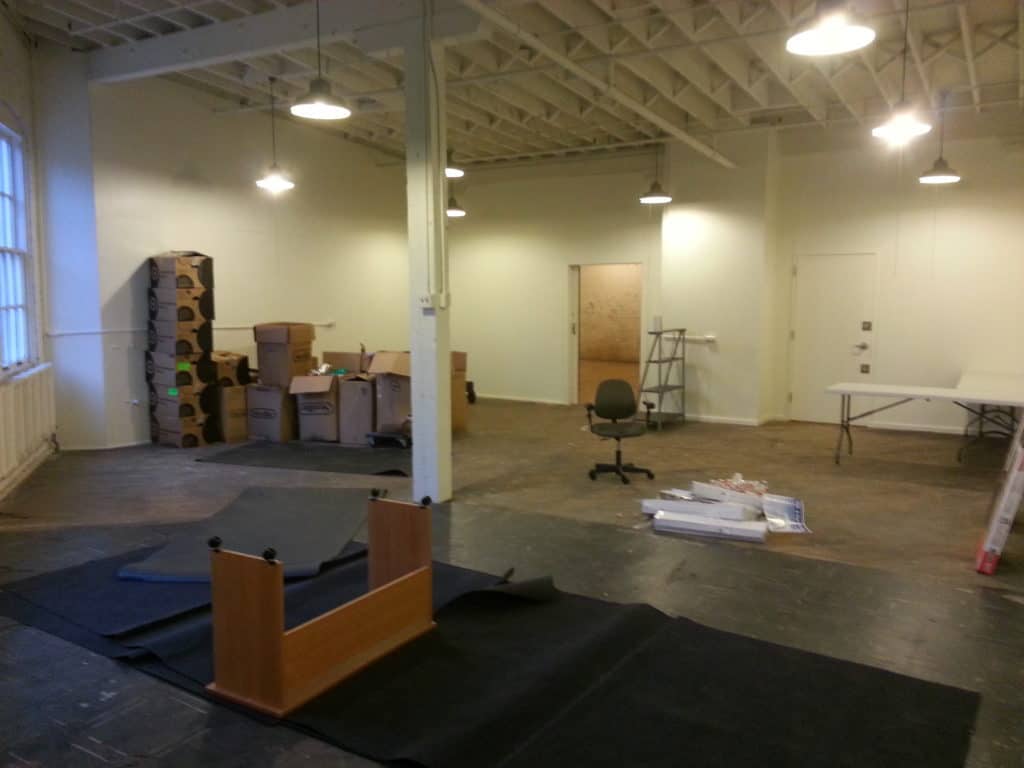
In September of 2014, I began leasing about 735 square feet of office / warehouse space. This would become the new “headquarters” for my business.
This was a huge step for my business and my life. I was able to move all of the product that was in my house into the warehouse. I no longer had my home overflowing with product. I had the space to bring in more inventory and I was able to better separate work and home.
Within 2 weeks of renting out the warehouse space I brought on my first full-time team member.
One thing I neglected to mention was that in addition to the product in my house I had 4 pallets of overstock items in my garage that I purchased from a local liquidation supplier.. Shortly after making that purchase I realized I VASTLY underestimated how long it would take to process all of that inventory.
Getting this product processed and taken care of was the first order of business when I brought on this new team member. We spent the first 2 weeks in the new space just taking care of all of this inventory.
After those pallets were out of the way, I decided I wasn’t going to buy any more inventory like that in the future.
We then spent our time doing retail arbitrage. The first couple of months were a lot of training, but having someone help me was invaluable. I was no longer the only one buying and shipping the inventory.
Q4 of 2014 was one that changed my business for good.
I bought more inventory than I ever had during the months leading up to December 2014. The vast majority of it was from local retail stores. The remainder was from a local liquidator. This time when I went with the liquidator I would only buy products if I was buying a significant number of the same unit. For example, 500 of a specific item. I learned my lesson on the mixed lot pallets I mentioned earlier.
I was a bit uncomfortable with the amount of inventory I had at this point, but I was confident that it would sell.
And sell it did.
In December of 2014 I did over $200,000 in sales, and made a profit of over $50,000. Here’s a screenshot of my December 2014 sales:
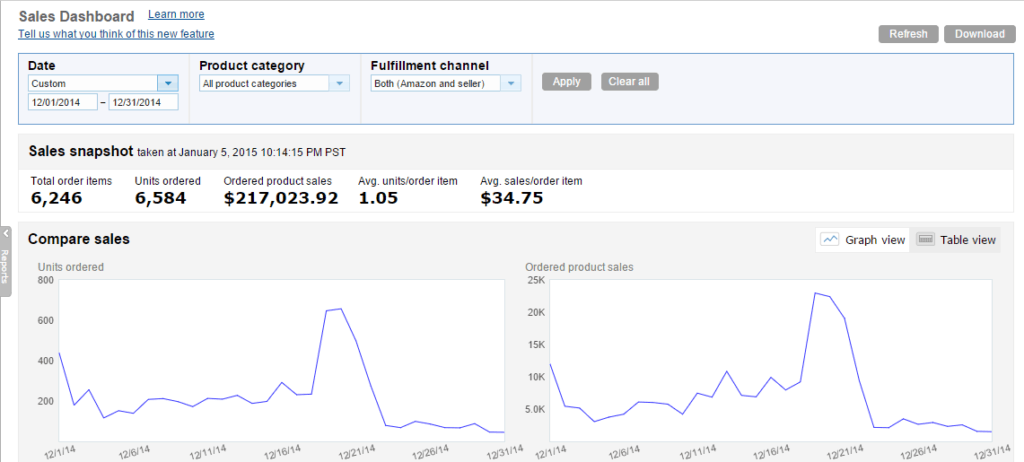
In that one month I had made more money in profit than I used to make in an entire year. If you’re interested you can read a full recap of that month here.
This exceeded my expectations by a long shot. This was just 15 months after I had quit my full-time job, and honestly I thought it would take a lot longer than that.
Throughout 2014, I didn’t take a salary from my business. I reinvested everything the whole way through. This led to my investment compounding all throughout the year, and is what helped make the huge December sales possible.
At the end of 2014 my business did $550K in sales, and we were a team of 2.
2015 – The Year of Building My Team
At the beginning of 2015 I was really looking to keep the momentum going, and wanted to continue to take things to a new level.
In January of 2015 my business brought on 2 additional part-time team members. Their initial primary responsibility was to help process and ship inventory to get it to Amazon FBA warehouses.
Having these additional team members allowed me and the other full-time team member to spend a lot more time sourcing inventory. This was because we did not have to do all of the prep and processing work.
The prep and processing work is absolutely essential. However, it’s very time consuming, and other people can be trained to do these tasks pretty easily.
Having this time freed up went a long way toward multiplying the results of the business.
In May of 2015, I brought on another full-time team member whose primary responsibility was sourcing inventory via retail arbitrage.
I also promoted one of the individuals that started helping with processing to the role of buying inventory via retail arbitrage, and hired another part-time person to replace their processing time.
This really started to get things moving to another level. There was now inventory that was consistently coming into the business and going out the door that I wasn’t touching at all. I was still very heavily involved in the business every day, but I was not even seeing all of the inventory before it was available for sale at this point.
My goal from the beginning was to build an automated system and a true business that could operate with or without me. I was starting to see that dream / goal begin to materialize.
Things were going well at this point, but then one of the biggest scares that has happened in my 5 years occurred.
My Amazon Seller Account was suspended.

This meant that all of my items for sale on Amazon were no longer available for purchase. At this stage, over 95% of my sales were happening on Amazon. Needless to say, this was a major problem.
I can still remember having to contact some of my team members telling them not to come into work the next day as we were having an issue with the Amazon account.
This was a terrible feeling.
I didn’t sit around feeling bad for myself for too long, and quickly made a plan to get my Amazon Seller Account back.
The main issue that led to the suspension was buying inventory from liquidation suppliers. There was one product in particular, a nail filing tool for dogs, that was the most problematic. I had purchased about 700 of these items to sell online. The first 50 or so that I sold went well and there were no issues.
Shortly after that though, some problems started to arise. Some customers were receiving product that was defective, and their nail filing tools for their dogs weren’t working properly. It sounds kind of funny typing it out now, but it wasn’t at the time.
Having multiple issues where customers complained and returned this item, coupled with a few other minor issues were what contributed to my account being suspended. The common theme with these problem items is that they were sourced via liquidation.
As part of getting my account back, I committed to no longer selling liquidation items unless there was a clear paper trail showing that they came directly from the manufacturer.
I submitted a plan identifying the issue and how my business was going to resolve it, then I waited for a response.
Fortunately, I didn’t have to wait for too long. My account was reinstated within 48 hours.
That’s the abridged version of the story of my suspension, and if you want to read the full story you can check it out here.
Even though my account was back, the feeling of having to tell members of my team not to come into work that one day stuck with me.
At this point, I realized what a significant responsibility it was to have other people on my team, and them relying on my business for an income. I decided that I needed to add in a bit of diversification to my income.
Up to this point I was making money through selling on Amazon, selling on eBay, some income from onlinesellingexperiment.com, and from renting out the duplex. However, Amazon was a huge part of it at this point. I decided that I needed to actively work to further diversify my income sources.
Around this time, I decided I wanted to add in an income stream that was more hands-on in helping other people grow their businesses. I didn’t want to do it the same way that I’d seen other people do it in the past though. I had been asked to coach or consult by many people up to this point, but outside of a few one-off projects, I didn’t take any on.
I decided to set it up in a way that I could work very directly with each person that joined. I would provide the strategies, regular support, and an annual conference at my location, among other benefits.
I also decided that I wanted my compensation for the program to be based on the results that the individuals in my program achieved. To accomplish this, I based the fees for the program on the increase in sales that I could help deliver for my clients. This ensured that our interests were aligned as much as possible to grow their business.
I brought on 7 clients between August and November of 2015 into this program. This was a significant step for my business, and was a new challenge that I was ready for.
It provided some additional income, and was also something that I really enjoyed.
My goal from the beginning with Online Selling Experiment has been to share what I’ve learned and experiences from my journey, hopefully in a way that is able to help you grow yours. So being able to work directly with these 7 individuals was a great experience.
Outside of growing my own business, helping others grow their own businesses is one of my favorite things. Fortunately, I’m still working with several of those individuals that joined originally as I write this. It’s not only been a great additional income stream, but also very fulfilling.
My coaching program has grown a bit over the years, and it’s still something I do today. It’s been a great expansion to my online retail business and has added some nice diversification. That’s all I’ll include about my coaching program in this post. Just know that it’s still operating to this day. If you want more details on it, how it factors into my business, or any other questions, let me know in the comments at the bottom of this post.
Another form of diversification that I added into my business was in the ways that we were sourcing inventory. We began to spend a lot of time working on wholesale sourcing in addition to the other methods I’ve talked about previously.
Wholesale sourcing involves buying products directly from manufacturers and distributors of existing brands. Essentially buying the same way as any brick and mortar store would buy their inventory. This allowed us to buy inventory in larger quantities, and reorder the same products again and again. It took us awhile to learn these things, but it was a great supplement to my business.
2015 ended up being a year of significant growth for my business. It was the first year that we exceeded $1 million in sales and the year ended at just over $1.7 million. This was a big milestone, and was exciting to hit. Especially in only my second full calendar year full-time, things were growing rapidly.
At the end of 2015 there were 5 people on my team other than me. There was the first person that I hired in 2014 who was now acting essentially as an operations manager, the 2 individuals doing retail arbitrage buying, and 2 individuals who were helping with prep and processing the inventory to get it to Amazon FBA warehouses.
Throughout 2015 I was paying myself a salary of $30,000 from the business. The remainder of the capital was getting reinvested (outside of what I had to pay for taxes). People often see the big sales numbers and immediately think that it’s all available in liquid cash. I think that’s a common misconception about growing a business.
The reality is that just about every dollar that came into my business was immediately getting reinvested. It was being invested in inventory, paying my team, paying for the warehouse space, among other things.
The amount of inventory that I owned was growing quickly, and that does have real value, but most of it wasn’t in liquid cash.
2016 – Continued Outsourcing & Taking Wholesale Sourcing Very Seriously
2016 was the year of more outsourcing, and getting serious with wholesale.
As I’ve mentioned a bit early in this post my goal from the beginning was to put a system and more outsourcing in place. During 2016 my business took a big step in that direction.
The individual that I mentioned that was the first person who began working with me in 2014 moved into the role of a day-to-day operations manager. He became responsible for virtually all aspects of the daily work. This meant managing the team, managing the Amazon account, and everything that came with that. He took responsibility for pricing items, managing inventory, growing the wholesale side of the business, and anything else required that contributed to keeping the business operating and growing.
This left me with the responsibilities of managing all of the financial aspects and determining the direction and focus areas for the business. I was still involved in the day-to-day operations of the business to some degree. However, I was to the point where I could take a trip and be out of the office for a week or more and the business would continue to grow.
In addition to moving the one individual to the operations manager role, there were a couple of other significant changes to the team.
We brought on an individual full-time to help get inventory listed for sale and shipped to Amazon. Their main responsibility was to get all the inventory listed for sale on Amazon or the appropriate platform, and then processed and shipped to Fulfillment by Amazon warehouses. At the rate inventory was coming in, this was a full-time job on it’s own.
Also during 2016 we promoted another individual who was initially in the processing role to a full-time position. The position initially began as a bit of a “utility player” and he helped out wherever needed.
After a few months we found the best spot for him was helping maintain and build our wholesale process. He was responsible for helping us find new accounts, evaluating which products we should buy, and helping with reorders for products that were selling well.
These shifts in responsibility enabled us to make big strides in the business.
Wholesale was growing very quickly throughout this year in the business.
One day in late 2016 we had our largest wholesale shipment ever arrive at the warehouse. It showed up a day or two before we were expecting it and no one was in the warehouse when the semi-truck showed up.
It was probably about 8:30 AM in early November and I was still at my house when my phone rang. It was the driver of the semi-truck letting me know that he was there with 17 pallets for me!
I slightly panicked at the thought of having to go and deal with that much inventory myself, but said, “I’ll be right there.” I jumped in my car and headed into the office which was about 5 minutes away. On the way I called a couple of my team members to see if they could get in ASAP to come help with the process of getting everything into our space.
One thing I haven’t mentioned so far about the warehouse space that my business was renting is that it was a 2nd floor unit. It required us to bring everything into our unit via a freight elevator. The freight elevator would hold two to four pallets of inventory depending on how high they were stacked, and how much they weighed.
Not only did we have to use a freight elevator, but needless to say as we were on the 2nd floor, we didn’t have our own loading dock.
There were several shared loading docks in the building, but “Dock 12” which was the closest one in the building that a semi could access was about a 5 minute walk each way.
And on top of that, there wasn’t a door big enough in the space to get a pallet through the door. So all of the boxes from every pallet would need to be removed before it could be brought into the space.
Keep in mind this was a 735 square foot space, we had three to four full-time individuals working from this space on a daily basis, and we had a lot of inventory as we were smack dab in the middle of Q4.
So all of this was going through my head as I was driving to the office that day.
I was able to get there before 17 pallets were off the truck and helped unload the last of it. Then I started the process of making the 5 minute walk to the freight elevator, taking the inventory up to the unit, taking it off the pallet, stacking it in our space, and then repeating the process.
Fortunately 2 of my team members were able to come and help within about 20 minutes of the shipment arriving. It still took us a couple of hours to get it all into our space.
It took up so much space that we literally covered the back 300 square feet of our unit with this product stacked as high as we possibly could. The same space we stacked the product happened to be where three desks were that we worked from. Two were blocked completely. For the other, we left a narrow walkway between the boxes. It literally felt like being in a maze.
This provided some extra motivation to get it all processed and shipped to Amazon FBA warehouses so we could use our desks again.
It took us about a week to get all of this inventory shipped in, but we got it done.
Going through this process also deeply exposed that there were some major inefficiencies that needed to be addressed if we wanted to continue to grow wholesale. I committed to myself that I wouldn’t allow us to go through another Q4 in this space.
It wasn’t always pretty, but things got done. I learned that sometimes hard work and growing faster than you expect can create some road bumps, but it really showed where I needed improvements. It also showed me that with some grit and determination, I could make just about anything work.
Including getting a 17 pallet shipment into a 735 square foot space that covered up desks temporarily.
Throughout 2016, we saw some major growth on the wholesale side of the business, as evidenced a bit by the 17 pallet shipment.
A lot of progress was made in 2016 as well for the business in general. A significant factor was that the team was now in place to run all of the day-to-day operations without me being present. Another major shift was the amount of sales that were coming from inventory that we sourced from wholesale suppliers.
I mentioned before that I wanted to focus more on diversifying my income. In late 2016 this led to me purchasing an existing eCommerce store. I did this not only to add an additional stream of income but also to experiment with standalone websites.
In 2016 we saw sales grow by over 50% compared to 2015. At the end of the year there were 8 people on my team.
At this point my salary from the business was about $48,000. Outside of paying taxes, I was again reinvesting just about everything back into the business. The overall inventory value, and the value of the business, was increasing but I was still investing the vast majority of capital back into the business.
2017 – A Change Of Scenery
As I mentioned in the 2016 section, I was committed to finding a new office / warehouse space for my business. I knew we needed a space that could allow us to operate much more efficiently. In reality we probably needed it sooner, but it was absolutely necessary in 2017.
In early 2017, we began the search for a new space. We toured 4 or 5 early in the year and found 1 that looked good and fit our needs. We wanted to move forward but were getting a bit of a runaround from the landlord. When we finally got a straight answer we found that the space wasn’t available until November of 2017. This wasn’t going to cut it, as that was too long to wait, and we weren’t going to move in the middle of Q4.
At this point, it was about April of 2017 and we still hadn’t found anything. We continued the search, and toured a few more places. Eventually we found one that had potential, but was a bit larger than what we were looking for. We were looking for around 3,000 square feet, and this space was just shy of 3,800 square feet.
We really liked the space, and knew that it had been on the market for a bit longer than was typical for the area. We made the landlord an offer for a bit of reduction on the rent that made the cost closer to what we would have been paying originally.
They accepted, and we we had our lease set to begin at the beginning of July 2017. We moved in right away and it’s been a huge improvement.
We now have our own loading dock, dedicated warehouse space, and dedicated office space. This dramatically improved efficiency across just about every aspect of the business.
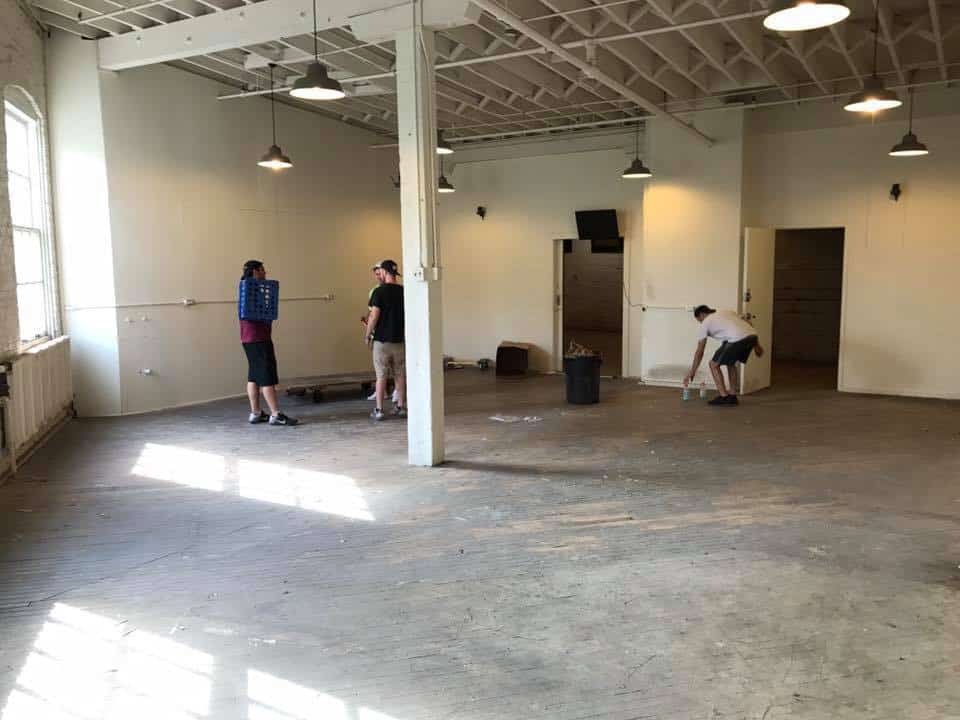
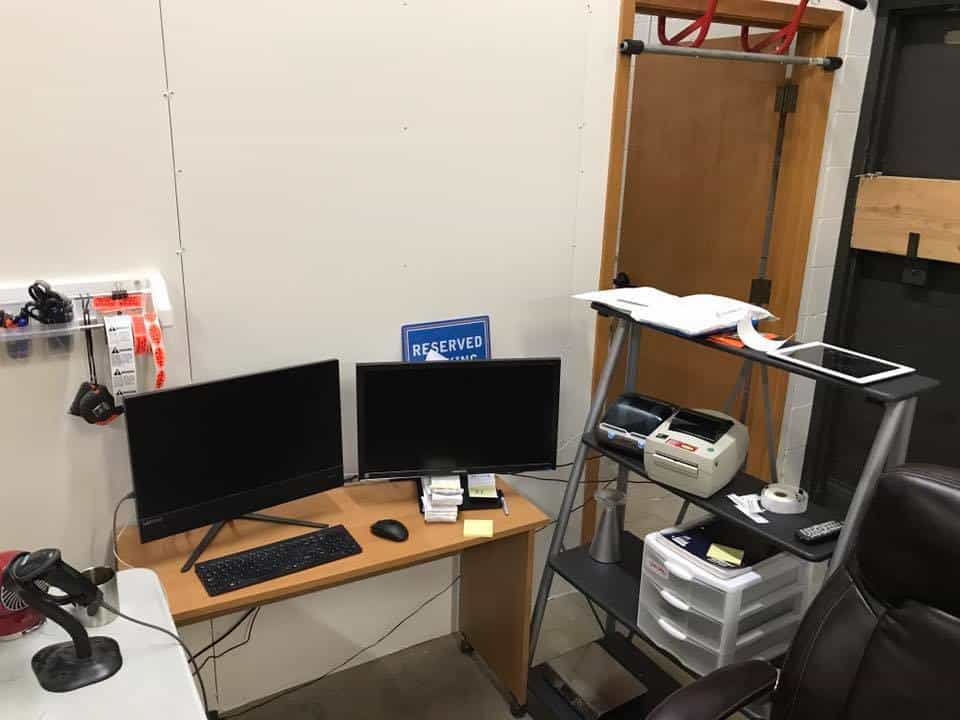

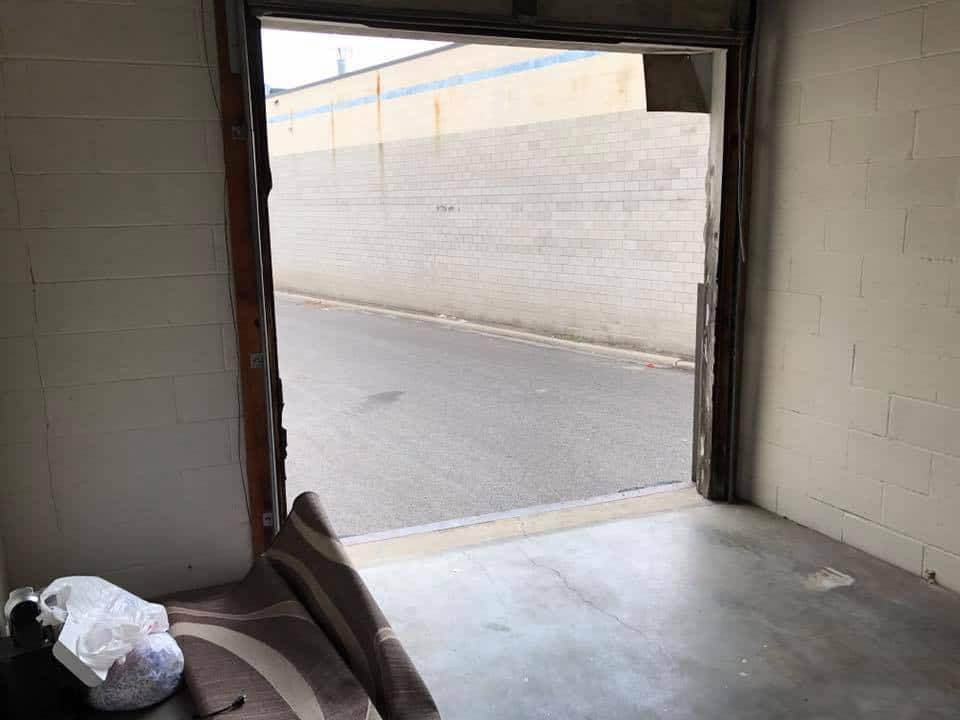
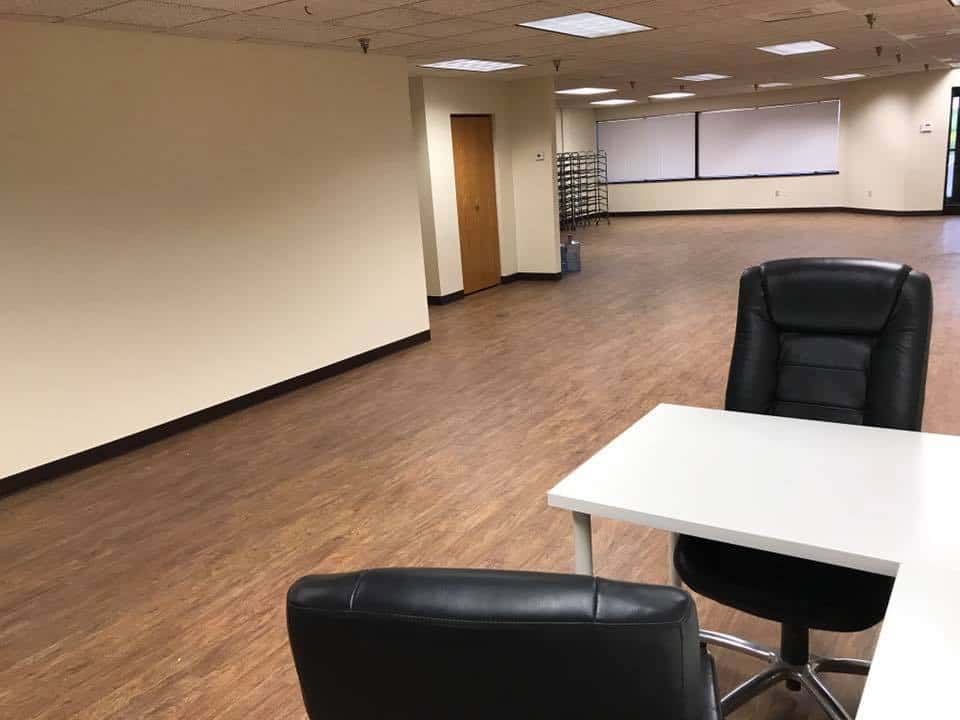
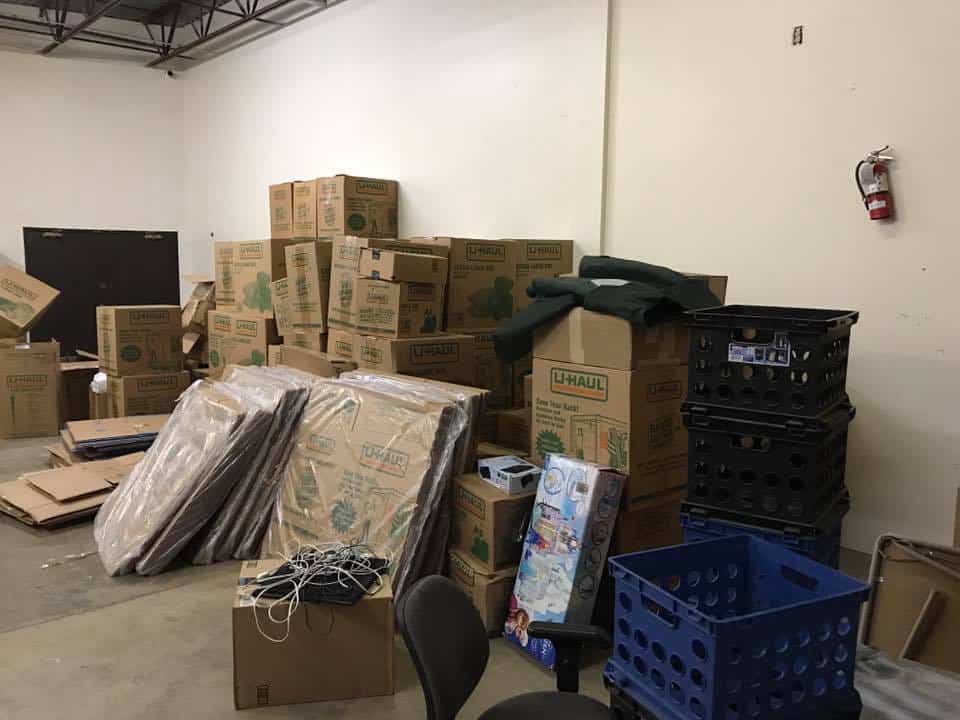
In 2017, I began to really dive into the eCommerce store that I purchased. I was working to get it back up to speed, and see what I could to do to grow the sales. I had a couple of interns throughout the year that helped for a period of time with the project, but we didn’t see a huge amount of traction.
If I’m being honest, this was due to being spread a bit too thin. I was working on the eCommerce project, leading and growing the main online retail business, doing coaching and consulting, and running Online Selling Experiment. To top it off, in the summer of 2017 I purchased another property to rent out via Airbnb.
As I’m writing this out, I know that I took on too much. At various times I’ve been a bit ambitious with how much I think I can get done. This was definitely one of those times. It’s a tough lesson to learn, but it’s starting to stick.
For one reason or another, the eCommerce project was the one that most often fell to the back burner. It was basically treading water throughout the year. I decided that it was time to give it a fair shot to see if it was viable, or to see if it was a project that I should move on from.
In December of 2017, I brought someone on full-time to be responsible for that project to see where it could go. Prior to this, the project saw some growth, but really not enough to move the needle. I was excited to see what it could do with someone focusing on it full-time.
Another big thing that happened in 2017 was that my business was featured on CNBC and Good Morning America. This was surreal, and a few years back would have been unfathomable to imagine.
This really helped to grow Online Selling Experiment and provided a significant spike in sales and traffic for a couple of months.
In particular, it led to a huge boost in sales for the course I had just started offering on selling on Amazon.
This was another project that I took on in 2017. I had done some eBooks in the past, but this was my first online course that I created and sold.
The main reason I decided to put together the course was to address the question I get every day: “How do I get started selling on Amazon?”
I had been hesitant to do a course for a long time, but really believe it was the right move for my business. At this point, it’s helped several hundred people start their own successful businesses selling online.
Part of my hesitation is that there is a bit of a negative perception of online courses out there. However, the more I thought about it, when used properly they are a win for the creator and a win for the customer.
I have purchased many courses and information products along the way in my business. Some were terrible. But some were amazing and paid for the investment in that course and all of the others I purchased, many times over.
I was confident that I could do it the right way. This confidence was based on building up the business over the past several years, helping my coaching clients significantly grow their business, and making mistakes so I could help others avoid them.
I knew I could add value, so it boiled down to if it was right for me to offer.
It was another income stream, which is great from a business perspective. It also allows me to be a part of helping others start and grow their own businesses, which is a passion of mine.
As much as I would like to be able to respond to every message and email I get with numerous questions about selling on Amazon, I simply couldn’t prioritize responding to emails over growing the business. Especially when there are some days I’m getting 50+ emails with questions. The course seemed like the best way to address the frequently asked questions I get on a daily basis.
Based on those factors I think adding in courses was the right move for me. We now offer a Launch Accelerator for people looking to start an online retail business that guarantees results. My goal here is to help minimize the risk associated with getting started to help even more people try this out.
For my main online retail business, it was another year of continued growth. Having the new space really allowed us to see some significant development. The team from 2016 remained almost the same with some new additional responsibilities. We added two additional part-time individuals to help process and ship out items.
We continued to source more and more of our inventory via wholesale. For the last few months of 2017, about half of the sales were from products sourced via arbitrage and the other half were sourced via wholesale.
In 2017 we saw sales grow by over 40% compared to 2016. At the end of the year there were 10 people on my team.
At this point, I was paying myself a salary from the business of about $50,000. I took some money out of the business to buy the property I mentioned that I was renting out on Airbnb. Outside of that purchase, and paying taxes, I left just about everything in the business to be able to continue to compound.
2018 – Present Day
This year has been the first full calendar year that we’ve been in the new space. So far, we’re off to a great start and it’s on track to far exceed what we did in 2017.
Our wholesale sourcing has continued to grow. We’ve had several months this year where sales from products sold via wholesale exceeded products that were sourced via arbitrage.
As we’ve started to take the project of the eCommerce store that I purchased more seriously, we’ve started to see some real results. Over the summer, it’s averaged about $5,000 in profit per month. This greatly exceeds what it was doing when I initially purchased it. There’s still some things we can do with this project, but this is the first year it’s seen real traction. You can read more about it through the financial results posts I’ve been sharing on the project.
This year, we’ve also devoted significant time to tweaking and optimizing our processes. We’ve been evaluating all of our major processes to see if there are improvements that can be made. Especially for ones that we haven’t touched in a while. I think this is an important thing to do in any business. By reviewing some processes we’ve found areas for improvement that will improve efficiency, and ultimately the overall profitability of the company.
As I write this, sales for this year to date are up by 57% compared to the same time period in 2017. We’re looking to continue this momentum through the end of the year, and I believe we’re on track to keep this same rate of growth.
Things I’ve learned along the way – My 5 Biggest Takeaways of the last 5 years
Take Calculated Risks & Be Willing to Make Some Mistakes
Especially at the beginning of starting a business you need to be willing to take risks, and not let the fear of making mistakes stop you from taking action. You won’t know exactly what will work, but the more things you try out, the more likely you will be to find something that works. For example, at the beginning I was trying out many different stores and many different product categories to find items to sell. I definitely made some mistakes along the way, but the common theme with every new strategy that I tried was that I learned something. I was then able to apply this knowledge in a way that benefited me in the future.
When making a decision that appears to be risky, I recommend looking at the risk versus the reward, as well as the expected value of the potential outcomes. Making decisions based on math ensures that you are making the decision on objective measures, as opposed to fear or emotion.
For example, let’s say you want to buy an item to sell on Amazon. You do some research and determine there is a 70% chance that you make a profit of $20. Then you determine that there is a 30% chance that you lose $30. What would you do?
We need to calculate the value of each potential scenario to determine our overall expected value. 70% of $20 is a profit of $14. 30% chance of losing $30 is a loss of $9. If we add these 2 outcomes together we get an expected value of a profit of $5.
Based on this, we should purchase that item. Over time this will lead to us making a significant amount of profit, even though we’ll end up selling for a loss some of the time.
This framework can be applied to just about any decision. Calculate what the likely outcomes are and assign a percentage to each. Then do the math, and if it’s positive go for it, and if it’s negative steer clear.
One caveat is that you want to ensure that’s it’s positive to a degree that still has a bit of margin for error. So if the expected value is $0.10, I’d still recommend steering clear in most cases. You can determine these thresholds for yourself, but just know that you want the expected value to have a little wiggle room.
Looking at the risk / reward and expected value are the main things that I look at in the majority of business related decisions I make.
Compound Your Returns
As I’ve shared throughout the post, I’ve been very heavily reinvesting money back into my business from the beginning. I started with about a $5,000 investment back in September 2013 and it’s now grown into much more value. As I’ve mentioned it’s not all in cash, but it’s increased the value of inventory that my business has on hand, and as a results increases the value of my business.
If I had not poured as much money back into the business at the beginning, then I would not have been able to grow as quickly.
People often ask me when they should start taking money out of their business. My answer is as follows, “If you want to maximize your rate of growth, you should wait as long as you can.” I understand this isn’t viable in every situation, but the more money you can keep working for you in your business, the faster your results will compound.
Build a Team
One of the absolute best things that I’ve done in my business has been to build a team. Having a team involved allows this to be a true business that can operate with or without me. Without my team members, this would not be possible.
If you are interested in creating a business that can continue to run and grow without your direct involvement, then you will almost certainly need a team.
Most people begin outsourcing when they have maxed out what they can do personally. There’s nothing terribly wrong with this approach, but I do think there’s a better approach.
The method that I prefer when it comes to outsourcing is this: As soon as you have a process that someone else can do that will allow your business to make more money, then you should do it.
There are a couple of main options you will have when you begin outsourcing, and have freed your time from a task you were doing previously.
Option 1:
The first is to outsource a task that frees your time so you can dedicate your time to a higher revenue-generating task. For example, let’s say you are currently the only one working in your business, and you are doing everything. If you are able to spend $11/hour to outsource the preparation of items for shipment you’ll free up 20 hours per week of your time. With this 20 hours per week that you freed up, you are now able to spend that time sourcing inventory for your business. Sourcing inventory is worth $40/hour to your business.
Would you pay someone $11 an hour to make it possible for you to do a task that makes you $40/hour?
I hope so, as the net effect would be making an extra $580 per week in profit from this one decision. The numbers here are hypothetical, but if you dedicate your time to sourcing as opposed to shipping, you should definitely make more money than it costs to pay someone to ship items for you.
Option 2:
The second time that it makes sense to outsource is to simply remove yourself from the process. This can be to have more free time, to be able to work on another business activity, or anything else that you choose.
In this example, your goal is to simply pay someone a wage to do a task that still allows you to make a profit. If we take the example from above, let’s say we have a system that can make $40/hour sourcing products. If you can hire someone to source products for you for between $15 and $20 an hour, you’ll have a good amount of margin to work with.
In that example, you would be making $20 to $25 an hour in gross margin for every hour that you have someone sourcing inventory for you. This is more than enough to cover all of the costs of having your team ship and prep the products to get them to Amazon’s warehouses, and other costs along the way.
In this scenario, your business is generating a profit and you have someone else buying and shipping the inventory out. This is a slightly simplistic example, but it shows how outsourcing can leverage processes and the time of others to create more profit for your business while reducing the hours required from the business owner.
Final point on outsourcing:
The last thing I will say about outsourcing is that if you are doing a task that you could pay someone else to do, then you are valuing your time at that rate.
Let’s say you can pay someone $11/hour to do all the shipping for your business. If you are doing the shipping, then you are effectively valuing your time at $11/hour.
I’m willing to bet you can make more than that in another area of your business, and I encourage you to find a way to do so. When deciding if you are spending time on the right tasks, I recommend asking yourself, “What would it cost to hire someone else to do this task for me?” Then compare that to how much you can generate in other areas of your business.
Over time your goal should be to do the work that only you can do for your business.
Invest In Yourself and Your Education
Along the way in my business I’ve continually invested in myself, and it’s continued to pay large dividends. Some ways that I’ve invested in myself include reading books, listening to business-related podcasts, buying courses, attending conferences, joining mastermind groups, and spending time actively improving my knowledge and skills.
I would also include buying inventory that I wasn’t sure would turn out well in this category as well. Whenever I come across an inventory opportunity that I think should work, I generally err on the side of buying it to find out what happens as opposed to not purchasing it. The reason for this is either I will end up earning a profit, or I will learn from the experience. Both are valuable, and sometimes doing something the wrong way teaches you how to do things right in the future.
I think that it’s very important to continue to learn and grow in all aspects of your life. I’ve found at times when I’m not reading books, or doing something to actively improve myself, I start to feel complacent in many aspects of my life. But when I’m actively trying to grow in one area, it spills over into other areas too and leads to overall improvement.
Here are some books that I’ve really enjoyed and got a lot out of over the past 5 years:
- The Slight Edge
- The Four Hour Workweek
- Shoe Dog
- Blue Ocean Strategy
- High Performance Habits
- Essentialism
Those are just a few of the books that I’ve got a lot out of in the past few years. I’ve read many more, but those are some of the ones that have stuck with me the most.
No matter how you do it, I encourage you to invest in yourself and do what you can to continue to learn and grow in all aspects of your life.
Network With Others on the Same Path
Over the past 5 years in my business I’ve gone to at least 2 different conferences per year. I’ve met a ton of amazing people and learned so much that I wouldn’t have otherwise. Especially in the first couple of years some of the people I met had a major impact on my business. I would say that some of the early conference that I went to led to some of the biggest breakthroughs in my business.
At these conferences that I went to, it often wasn’t something that I learned from the speakers on stage that had the biggest impact. Most of the time the biggest impact came from something I learned directly from another conference attendee. If you are attending conferences, I encourage you to take advantage of the networking opportunities. Just about everyone is there to learn and grow, so make a real effort to have meaningful conversations with other conference attendees.
You don’t necessarily need to go to a conference to be able to network with others either. There’s a good chance there are local meet up groups in your area that discuss topics related to selling online, or starting your own business. These can be great options as opposed to traveling to a conference.
There are also ways to network without ever leaving your house. There are communities on Reddit, on Facebook, among other websites specifically related to people selling online. These allow for networking without ever leaving your home.
Find the method that makes sense for you, and do what you can to learn from others on a similar path to you.
Conclusion:
If you’re still with me at this point, I hope you’ve learned a few things from reading this post. It’s been fun putting the post together, and it’s been an incredible journey thus far. It’s still hard to believe that it’s been 5 years since I quit my accounting job to pursue this business.
I’ve learned a lot along the way, and am looking forward to the next 5 years in my business and seeing how things evolve!
At this point the post is over 10,000 words so I’m going to wrap it up here. There’s a lot of other things that happened, and some things I briefly introduced in the post that I could elaborate on a lot more. If you would like me to expand on anything or have questions, please let me know in the comments below!

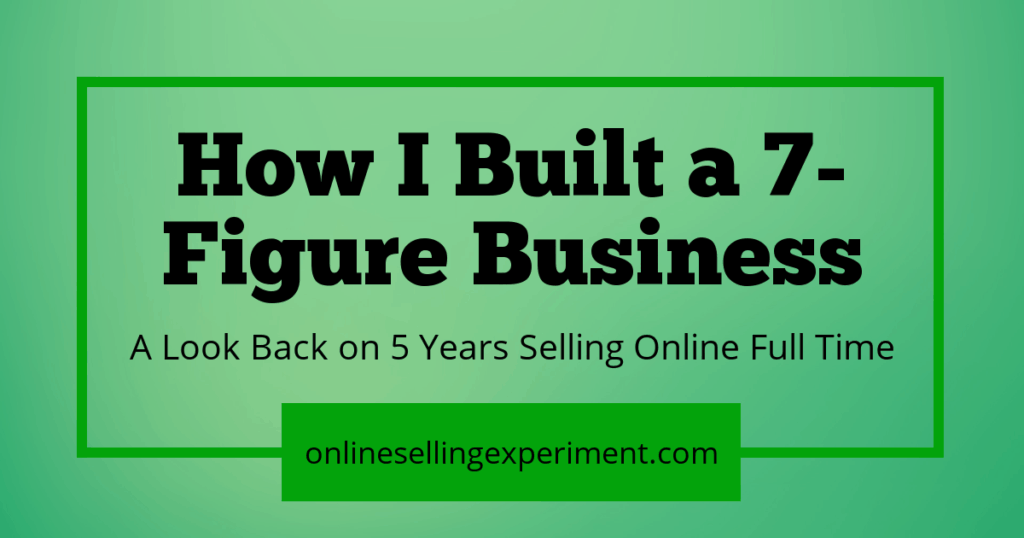

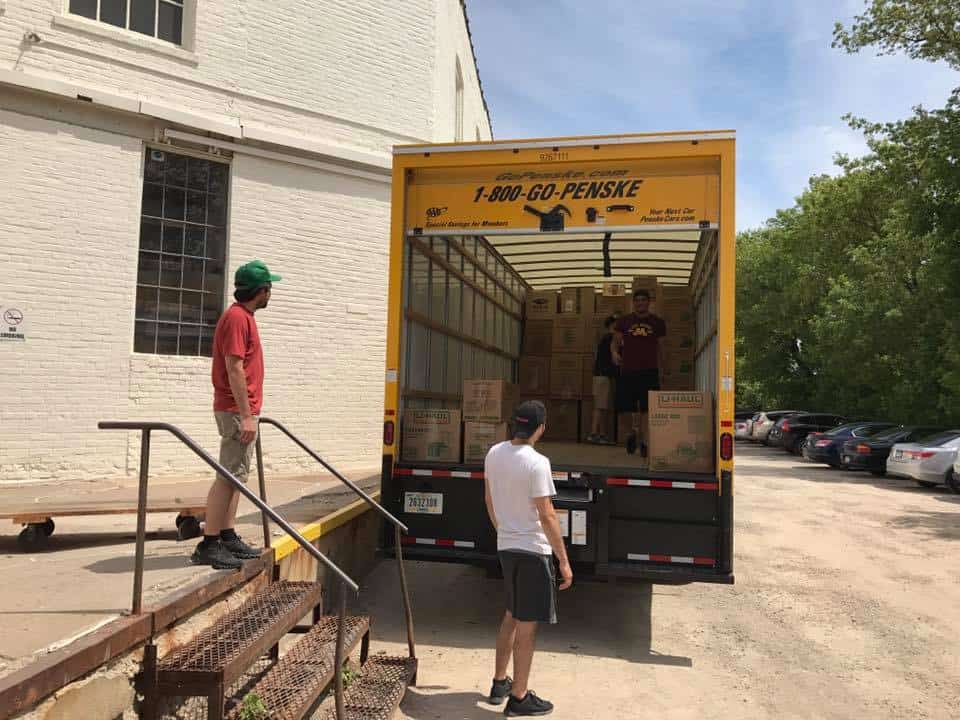
Thanks for sharing Ryan. You may have mentioned this elsewhere, but how old were you when you made that jump and left your job in 2013?
Best,
Ryan
Thanks Ryan! And I was 24 when I made the jump.
Best Regards,
Ryan
Ryan,
Thanks for the long post. I’ve been with you since the beginning as we started selling on Amazon in 2013 as well. I think your’s was one of the first blogs I found. As of this summer, I am now full time with my Amazon business as well. Also, it was fun to meet you (and play basketball with you) at CES in Orlando last year. I would second your comment about networking at conferences. Keep up the good work! You have provided great value to me over the years.
Hi Paul,
Thanks for the comment and following from the beginning, I appreciate it!
Basketball at CES was definitely a good time 🙂
Best Regards,
Ryan
I wish to sell some of my personal items, like Lenox China. How do I get started? Thank you. Carolyn C.
Hi Carolyn,
Thanks for the comment. I’d recommend getting started with the strategy outlined in this post.
Best Regards,
Ryan
Great story and advice for others interested in starting their own business. Cool to see how far you’ve come.
Thanks Lee, I appreciate it!
Best Regards,
Ryan
Great write up. I appreciate the candor and insights into how you got where you are. I too began with thrift stores, RA, garage sales, and then mostly sold via eBay. Saving only the best items for Amazon because of all the horror stories about suspension. Like you, I’ve since moved on from thrifting/eBay because my time was better spent elsewhere. I’ve got a couple PL products and a couple wholesale products that consistently profit $1000-$1500 per month. I’d like to continue to grow, but I do also have a full-time job that I enjoy and pays well. I’m considering hiring a VA to search for wholesale/PL opportunities. Have you done this with any success? Thanks again for the good info:)
Hi Kevin,
Thanks for the comment, and glad to hear you are seeing some good results in your business. I do have some VAs that help in my wholesale process. I’ll consider doing a blog post on that in the future. I do have one post available now that goes through my hiring process for VAs which would get you started. You can check that out here.
Best Regards,
Ryan
Great story, Ryan! I have been an independent business person most of my life and lived with some of the angst and successes you describe. Best wishes for the future!
Larry
Thanks Larry, I appreciate it!
Best Regards,
Ryan